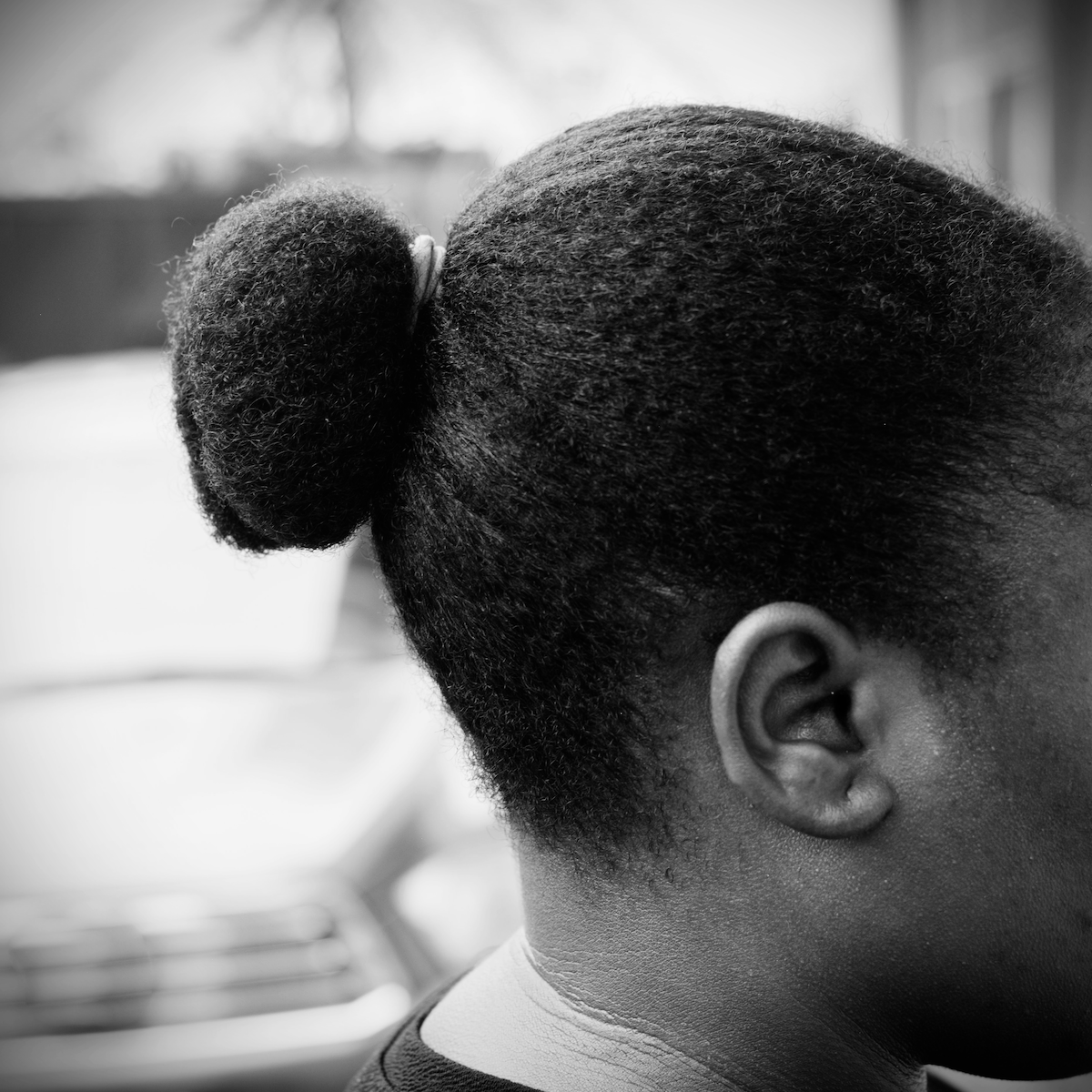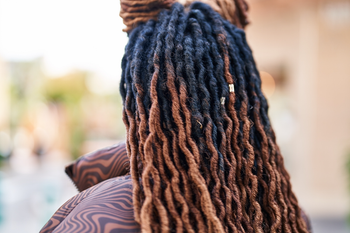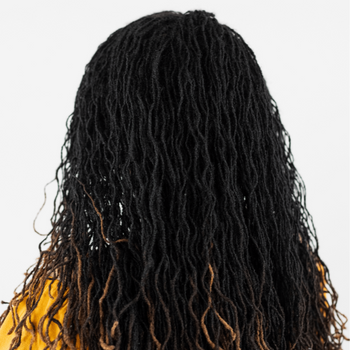

Embracing your natural 4c textured hair is a journey of self-love and discovery. You deserve to feel confident and beautiful with your unique crown. The key to unlocking the full potential of your 4c hair lies in understanding its needs and providing the proper care. With the right approach, you can transform your hair care routine into a luxurious self-care ritual that nourishes your tresses and soul.
This article explores the essential aspects of 4c hair care, from defining its characteristics to overcoming common challenges. You'll learn about effective natural hair care routines, including the best ways to moisturize and hydrate your locks. We'll also dive into versatile styling options like twist-outs, cornrows, and wash-and-go looks that showcase the beauty of your 4c hair. By the end, you'll have the knowledge and inspiration to embrace your natural texture and achieve healthy, thriving hair.
Table of Contents
Defining Characteristics of 4C Hair
4C hair is a unique and beautiful hair type that requires special care and attention. Understanding its characteristics is key to maintaining healthy, thriving locks. Let's explore the defining features of 4C textured hair.
Curl Pattern
The curl pattern of 4C hair is truly one-of-a-kind. It boasts a super coily zig-zag pattern that creates a dense, full-bodied look with natural volume. Unlike other curl types, 4C hair doesn't have a single defined curl pattern. Instead, it's a mix of waves, coils, curls, and zigzags throughout the strands. This variety gives 4C hair its distinctive appearance and texture.
Looking closely at 4C hair, you'll notice that the curls are tightly packed and form a 'Z' pattern. These coils are so compact that they're often hard to see individually unless you're up close. This tight curl pattern contributes to the hair's natural volume and ability to hold styles well.
Texture and Density
4C hair is known for its unique texture and density. The strands can range from very fine to coarse but are typically more delicate than other hair types. This fragility means that 4C hair requires gentle handling to prevent breakage.
Despite its delicate nature, 4C hair is incredibly dense. This density allows it to create stunning natural styles like afros and voluminous updos. The tightly packed coils contribute to the hair's fullness, making it perfect for creating bold, eye-catching looks.
However, this density can also make 4C hair prone to tangling and matting. Regular detangling sessions using wide-tooth combs and plenty of moisture are essential to maintain the hair's health and manageability.
Moisture Retention
One of the most significant challenges for 4C hair is moisture retention. The tight coils make it difficult for natural oils from the scalp to travel down the hair shaft, leading to dryness and potential breakage [1] . This characteristic means that 4C hair requires extra care and attention regarding hydration.
It's crucial to incorporate regular deep conditioning treatments into your hair care routine to combat dryness. These treatments can help infuse your 4C hair with much-needed moisture and strength, enhancing its elasticity and reducing breakage.
The LOC (Liquid, Oil, Cream) method is popular for maintaining moisture in 4C hair. This method involves layering products to lock in hydration, starting with a water-based product, then an oil, and finishing with a cream.
Understanding these defining characteristics of 4C hair is the first step in developing a tailored care routine. By embracing your hair's unique qualities and providing it with the proper care, you can unlock the full potential of your beautiful 4C textured hair.
LOC Method Products
Overcoming 4C Hair Challenges
Embracing your beautiful 4C textured hair comes with a unique set of challenges. But don't worry! With the right approach and care, you can overcome these hurdles and unlock the full potential of your gorgeous coils. Let's explore some common issues and how to address them effectively.
Combating Dryness
One of the biggest challenges for 4C natural hair is keeping it moisturized. Your tight coils make it difficult for the natural oils from your scalp to travel down the hair shaft, leading to dryness and potential breakage. To combat this, you need to be proactive about hydration.
The LOC method is a game-changer for keeping 4C hair moisturized. This technique involves layering products to lock in hydration, starting with a water-based (Liquid), then an Oil, and finishing with a Cream. This method helps seal moisture and keep your curls hydrated for longer periods.
Deep conditioning is another crucial step in your 4C hair care routine. Aim to deep condition your hair at least once a week. This process helps to nourish and strengthen your hair, repair damage, and improve moisture retention. Some people with 4C hair may need to deep condition more frequently, especially if their hair is exposed to heat or chemical treatments.
Preventing Breakage
4C hair is naturally delicate and prone to breakage. To keep your strands strong and healthy, handling them with care is essential. Here are some tips to prevent breakage:
Use a silk or satin pillowcase, or wrap your hair in a silk scarf at night. This reduces friction and helps retain moisture while you sleep.
Avoid using products with sulfates, as they can strip your hair of its natural oils and lead to dryness and breakage.
Be gentle when detangling. Always start from the ends and work your way up to the roots, using a wide-tooth comb or your fingers.
Trim your hair regularly to eliminate split ends before they cause more damage.
Opt for protective hairstyles that keep your ends tucked away and minimize manipulation.
Managing Shrinkage
Shrinkage is a common issue for 4C hair, with some experiencing up to 75% shrinkage. While it's a sign of healthy, elastic hair, it can be frustrating when trying to show off your length. Here are some techniques to manage shrinkage:
Try the banding method: This involves sectioning damp hair and wrapping each section with elastic bands from root to tip. Allow your hair to air dry in this state to stretch it out.
Use heat strategically: While excessive heat can be damaging, the occasional use of a blow dryer on a cool setting can help elongate your curls. Always use a heat protectant when applying any heat to your hair.
Experiment with stretch-friendly styles: Twist-outs, braid-outs, and Bantu knots can help elongate your curls while adding definition.
Remember, overcoming these challenges is a journey. Be patient with your hair and yourself as you discover what works best for your unique 4C textured hair. With consistent care and the proper techniques, you can maintain healthy, thriving curls that showcase the true beauty of your natural hair.
Step-by-Step 4C Hair Care Routine
Taking care of your 4C textured hair requires a dedicated routine to keep it healthy, moisturized, and thriving. Here's a step-by-step guide to help you maintain your beautiful coils:
Cleansing and Conditioning
Start your routine with a gentle cleansing process. Use a sulfate-free shampoo to avoid stripping your 4C hair of its natural oils. Shampoo your hair once or twice a month to maintain a clean and healthy scalp without over-drying your strands. When washing, focus on your scalp and let the suds run down the length of your hair.
After shampooing, it's time to condition. Apply a moisturizing conditioner, focusing on the ends of your hair. Let it sit for a few minutes before rinsing. This step helps to soften your hair and make detangling easier.
Deep Treatments
Deep conditioning is crucial for 4C hair. Aim to deep condition your hair once a week or every two weeks, depending on your hair's needs. Apply a deep conditioner or hair mask, making sure to cover all your strands. For best results, leave it on for 30 minutes to an hour. You can use a plastic cap or towel to create a warm environment, which helps the product penetrate deeper into your hair shaft.
Daily Maintenance
To keep your 4C hair moisturized between wash days, follow the LOC (Liquid, Oil, Cream) or LCO (Liquid, Cream, Oil) method. Start by spritzing your hair with water or a leave-in conditioner. Then, apply a hair oil like jojoba or argan oil to seal in the moisture. Finish with a cream-based product to lock everything in.
Remember to use a satin or silk bonnet or pillowcase to protect your hair at night. This helps retain moisture and reduce friction, leading to breakage.
By following this routine consistently, you'll notice your 4C hair becoming more manageable, moisturized, and healthy. Remember, every head of hair is unique, so feel free to adjust this routine to best suit your hair's specific needs.
Versatile Styling Options for 4C Hair
Your 4C textured hair is a canvas for creativity, offering endless possibilities for stunning styles. Let's explore some versatile options that showcase the beauty of your natural hair while keeping it healthy and protected.
Twist-Outs and Braid-Outs
Twist-outs and braid-outs are popular styles for 4C hair that create defined, voluminous curls while protecting hair. To achieve a perfect twist-out, start with clean, moisturized hair. Apply your favorite leave-in conditioner and finger-detangle thoroughly. Use a cream-based product to add moisture and hold for a more defined look.
Create medium-sized sections and twist your hair, keeping the strands taut as you work. The key to a successful twist-out is to avoid borrowing hair from other sections, as this can lead to tangling when unraveling. Allow your twists to dry completely before unraveling them for best results.
For added length and protection, you can do your twist-out on slightly damp, stretched hair. This technique helps to minimize shrinkage and can give your style more longevity. When unraveling your twists, be gentle to avoid frizz and maintain definition. Remember, the more twists you create, your final look will be fuller and more voluminous.
Bantu Knots
Bantu knots are a beautiful protective style for 4C hair with a rich history in African beauty culture. This versatile style can be worn as is or unraveled to create a stunning curly fro. To create Bantu knots, start by sectioning your hair into small to medium-sized parts. The size of your sections will determine the final look of your style.
Applying a styling product like edge control or gel to each section for a sleek finish before twisting. Twist each section tightly, then wrap it around itself to form a compact knot. Secure the end of the twist by tucking it under the knot. For added flair, you can incorporate hair extensions, beads, or scarves into your Bantu knots.
One of the best features of Bantu knots is their longevity. They can last a week or more, making them an excellent low-maintenance option for busy naturals. When ready for a change, simply unravel the knots to reveal a beautiful, uniform curly fro.
Afro Styles
Embracing your natural 4C hair in its full glory is a powerful statement. Afro styles celebrate your hair's unique texture and volume. To achieve a full, defined afro, start with well-moisturized hair. Use a leave-in conditioner and seal with an oil to lock in hydration.
For a classic afro, use a pick to gently lift your hair at the roots, creating volume and shape. Remember, 2024 is all about embracing your natural curl pattern, so don't be afraid to let your coils shine. For a more defined look, you can create a coiled afro by using a curl-defining cream and finger-coiling small sections of your hair.
If you're looking for a quick and easy style, try an afro puff. Simply gather your hair at the crown of your head and secure it with a hair tie. For added definition, you can twist small sections of the puff before fluffing it out.
Remember, the key to successful 4C hairstyles is moisture and gentle handling. Always use products that nourish your hair and protect it from breakage. With these versatile styling options, you can showcase the beauty and versatility of your 4C textured hair while keeping it healthy and thriving.
Conclusion
Embracing your 4C textured hair is a journey of self-love and discovery. This guide has shed light on the unique characteristics of 4C hair, offering practical tips to overcome common challenges and maintain healthy locks. From combating dryness to managing shrinkage, you now have the tools to create a tailored care routine that nourishes your natural hair. The versatile styling options we've explored showcase the beauty and adaptability of 4C hair, allowing you to express your individuality through stunning hairstyles.
Patience and consistency are key to achieving healthy, thriving 4C hair. By incorporating the care techniques and styling methods discussed, you're well on your way to embracing your natural texture with confidence. Your 4C hair is a crown to be proud of, so continue to explore, experiment, and celebrate the unique beauty of your coils. With the right care and attitude, your 4C hair will flourish, becoming a true reflection of your inner radiance.
References
[1] - https://lohy.com.au/pages/4c-hair-type?srsltid=AfmBOoq6EyU3oIdcqYMhRQB-mB8J7FNC3l2GSohGiEcbRoMH_0G4S09b
Frequently Asked Questions
What are the best practices for enhancing the texture of 4C hair?
To improve your 4C hair texture, consider these tips: Wash your hair gently and focus on retaining moisture at all times. Regularly detangle your hair, deep condition frequently, and be mindful of the ingredients in your hair products. Utilize the LOC (Liquid, Oil, Cream) or LCO (Liquid, Cream, Oil) methods to lock in moisture, protect your hair at night, and regularly trim split ends.
How can I prevent my 4C hair from becoming frizzy?
To keep 4C hair from frizzing, ensure your hair is well-moisturized. Use the LOC method to seal in moisture, avoid brushing your hair, and detangle it carefully. Protect your hair at night with a silk or satin covering, use natural oils to smooth the hair, and opt for drying your hair with a microfiber towel. Also, sleeping on a silk or satin pillowcase can help reduce frizz.
What are effective ways to maintain healthy 4C hair?
Maintaining healthy 4C hair involves several key practices: Keep your hair moisturized, handle it gently as it is very fragile, and use protective styling to reduce manipulation. Don't overlook the importance of scalp care, give extra attention to the ends of your hair, and trim regularly to keep your hair in good health.
What should I do and not do when caring for 4C hair?
When caring for 4C hair, do keep it moisturized and deep condition often. Use a leave-in conditioner to maintain hydration, detangle gently, and avoid washing your hair too frequently. Minimize touching your hair excessively, steer clear of over-styling, and opt for protective hairstyles to prevent damage and promote growth.




